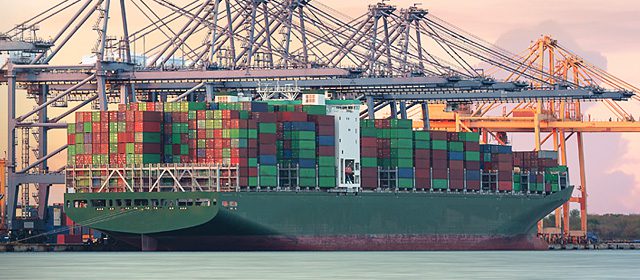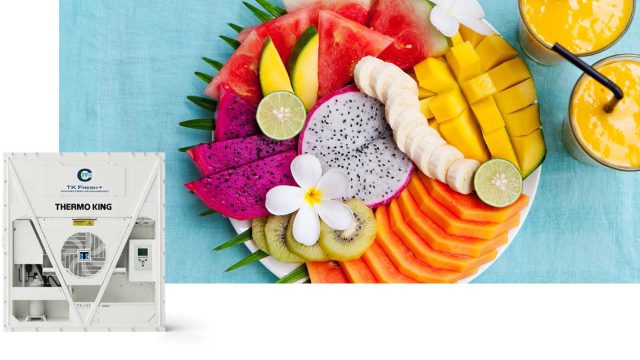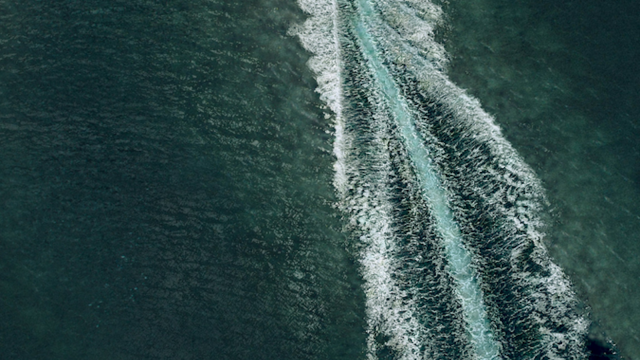3 degrees of change: what’s the best frozen temperature in shipping?

There’s been an interesting debate recently in the world of refrigerated transport, based on the so-called ‘3 degrees of change’. A topic brought to life most recently by research led by the University of Birmingham in the UK, the Paris-based International Institute of Refrigeration, and the London South Bank University (among others).
In essence, the findings suggest:
- Frozen food temperature setpoints could be increased from a ‘standard’ of -18°C to -15°C across global cold chains to reduce energy consumption
- Such a reduction in frozen temperature setpoints could avoid 17.7 million metric tonnes of carbon dioxide annually, equivalent to 3.8 million cars
Although the standard -18°C temperature has been in place for almost 100 years, the recent study has triggered new insights that challenge this approach. Alongside the questions raised by the research sits arguably the most important one of all: is it practical? Let’s consider the detail:
The benefits for frozen shipping
First off, there appears little evidence that moving to -15°C will have a negative effect on either food safety or shelf life. Most harmful bacterial growth only starts to occur at -10°C.
Moreover, a ‘warmer’ setpoint temperature does indeed require less energy – thus delivering a more sustainable cold chain:
- The reduction in temperature is anticipated to save between 9-10% in energy – or around 25 terawatt-hours (TW/h) per year
- This equates to a saving for shipping companies of around $1.20 a day for every 300w/h reduction per container
- Total cost savings are therefore estimated to be between 5-12% across the cold chain
Yet behind these numbers exists the reality of day-to-day operations, and how a frozen environment is consistently maintained inside reefers. Practical considerations that need to be kept in mind when considering wide-scale change.
Keeping the cold chain unbroken
The typical ‘job’ of a temperature-controlled reefer is to receive a frozen load at the requested setpoint temperature, then travel to a port where it can spend up to 4 hours in power off mode during the loading process, before being connected to an on-board power supply. For operations carrying critical or highly sensitive loads, reefers must be powered by gensets to guarantee cold chain integrity.
Likewise on reaching the destination port, a similar process is followed as reefers are unloaded and connected up to a genset power supply, before transport to a final delivery point (or points, involving multiple door openings).
Each of these stages has the potential to temporarily ‘break’ a cold chain. To counter anticipated heat losses, many shipping firms ‘over-freeze’ food cargoes. Heat losses are caused by factors such as:
- Aging insulation – estimated to drop by 10% in the first ten years, which leads to heat leakage
- External temperature fluctuations – where the outside ambient temperature can impact conditions inside the reefer (which are mostly designed to maintain a temperature, not to lower it)
- Mechanical failure – which can lead to a sudden loss in cooling capacity
While reefer manufacturers continue to innovate to improve efficiency and reliability, some of these losses remain unavoidable. Therefore, any change in the freezing set point has to take into account this operational reality – and the need to ensure cold chain integrity to guarantee food safety and prevent loss and waste.
Implementation requirements
With -18°C as a standard temperature setpoint, there is capacity to allow for any potential drop in frozen conditions before food is spoiled. Move to -15°C, and this safety margin becomes significantly smaller. That puts the emphasis on:
- Precision: to give shippers, shipping line staff, and customers the confidence of knowing that they can set a precise set point and maintain it throughout a journey
- Control: having real-time visibility of load conditions, plus the ability to change these on demand (for example, lowering temperatures a few hours or days before a planned intermodal change.)
Moreover, delivering on the full benefits of ‘3 degrees higher’ is not a responsibility of shippers alone. Positive impact can be created at every step of the cold chain, including freezers inside people’s home and supermarkets to ensure setpoint consistency.
Taking an end-to-end approach
Where technology plays a vital role, and where Thermo King has placed great emphasis in its product development, is to deliver the necessary precision and control as standard. In addition, cooling technologies should also help advance the goals of sustainability by offering greener energy sources and the highest levels of energy efficiency.
For example:
- Container Fresh & Frozen: combines precise temperature control (+/- 0.25°C in chilled mode and +/- 1°C in frozen mode) with the use of low pressure and lower global warming refrigerant.
- E-Coolpac is zero emission battery genset solution for refrigerated marine containers. The result is an environmentally friendly and extremely reliable source of power with low operational costs.
- For long intermodal journeys, SG-5000 Series is a powerful marine genset that provides reliable power for all ISO1496 reefer containers, no matter age or brand. This model is CARB compliant, with low levels of emissions and particulate matter.
- Directly integrated into our reefer’s controller, smart telematics ensures traceability in your cold chain operations. They enable you to monitor all aspects of your cargo’s journey – so you can optimize in real-time, and improve for the future. The reefer controller also offers multi-temperature set points so you can change the temperature anytime during all the journey.
Explore every opportunity for a sustainable and cost-effective future
Increasing the standard frozen temperature inside cold chains to -15°C brings with it a series of impressive benefits. Arguably, the question today is no longer “why” but “how”, and ensuring the cooling technology employed offers the capabilities needed to turn this ambition into reality, while continuing to reduce food loss and waste
To find out more about how Thermo King is helping advance marine cooling, click here.
Other relevant articles that might interest you

Marine
Thermo King to supply 5,000 Magnum® Plus Refrigeration Units to CMA CGM.
Thermo King supplied 5,000 Magnum® Plus refrigeration units to be fitted on CMA CGM refrigerated shipping containers. …

Marine
(Don’t) let it breathe: regulating fresh air circulation in produce transport.
There is more to transporting fresh produce than temperature management. While temperature is critically important, equally …

